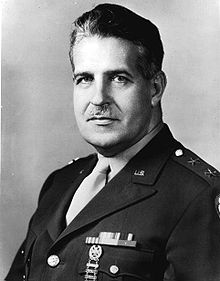Leslie Groves
Lieutenant General Leslie Richard Groves Jr. was a United States Army Corps of Engineers officer who oversaw the construction of the Pentagon and directed the Manhattan Project, a top secret research project that developed the atomic bomb during World War II. As the son of a United States Army chaplain, Groves lived at a number of Army posts during his childhood. He graduated fourth in his class at the United States Military Academy at West Point in 1918 and was commissioned into the US Army Corps of Engineers. In 1929, he went to Nicaragua as part of an expedition whose purpose was to conduct a survey for the InterOceanic Nicaragua Canal. Following the 1931 Nicaragua earthquake, Groves took over responsibility for Managuas water supply system, for which he was awarded the Nicaraguan Presidential Medal of Merit. He attended the Command and General Staff School at Fort Leavenworth, Kansas, in 1935 and 1936, and the Army War College in 1938 and 1939, after which he was posted to the War
Leslie Richard Groves Jr. was born in Albany, New York, onAugust 1896, the third son of four children of a pastor, Leslie Richard Groves Sr., and his wife Gwen ne Griffith. A descendant of French Huguenots who came to America in the 17th century, Leslie Groves Sr. resigned as pastor of the Sixth Presbyterian church in Albany in December 1896 to become a United States Army chaplain. He was posted to the 14th Infantry at Vancouver Barracks in Washington in 1897. Following the outbreak of the SpanishAmerican War in 1898, Chaplain Groves was sent to Cuba with the 8th Infantry. On returning to Vancouver Barracks, he was ordered to rejoin the 14th Infantry in the Philippines service in the PhilippineAmerican War and the Boxer Rebellion followed. The 14th Infantry returned to the United States in 1901 and moved to Fort Snelling, Minnesota. The family relocated to there from Vancouver, then moved to Fort Hancock, New Jersey, the next year, and returned to Vancouver in 1905. Chaplain Groves
Source: Wikipedia

